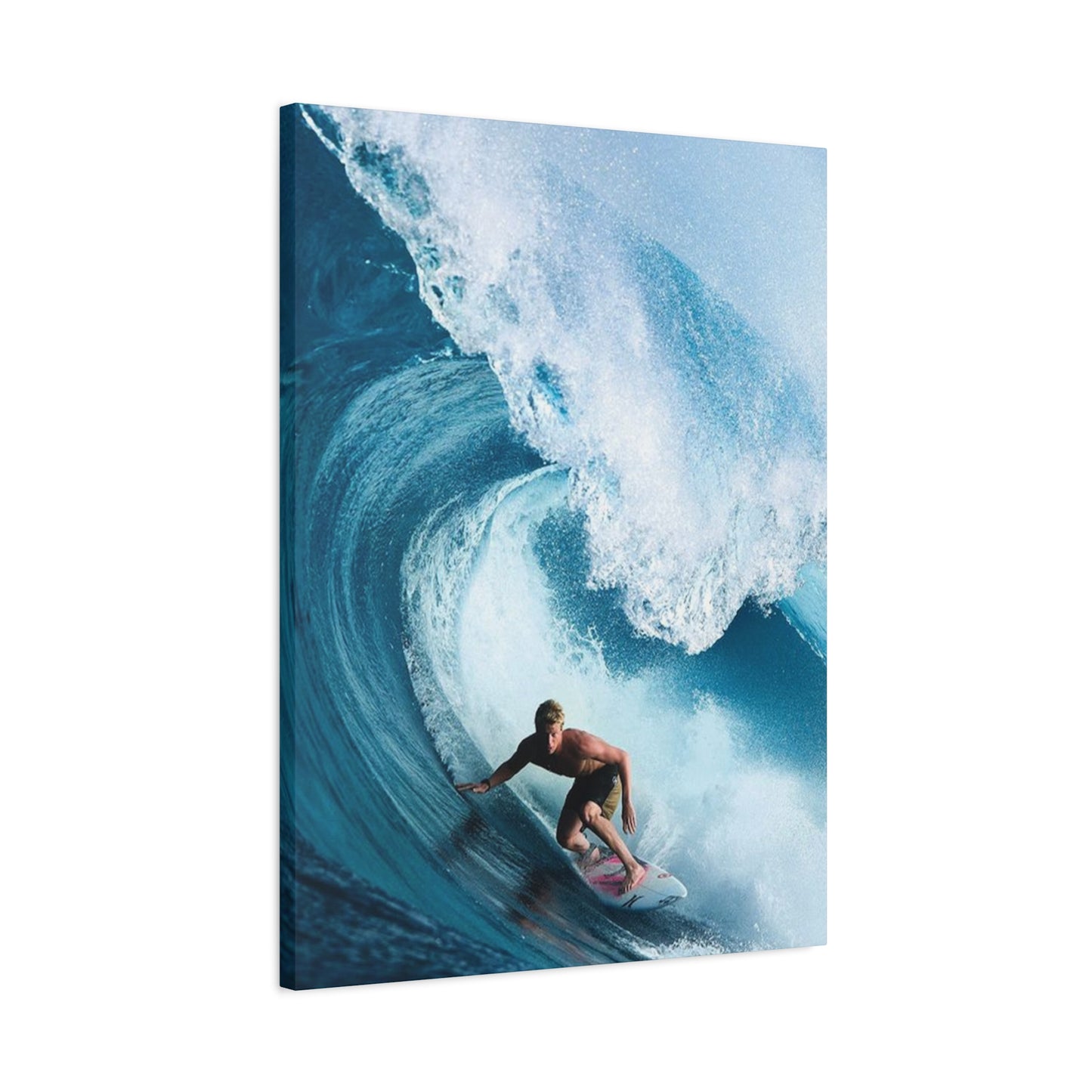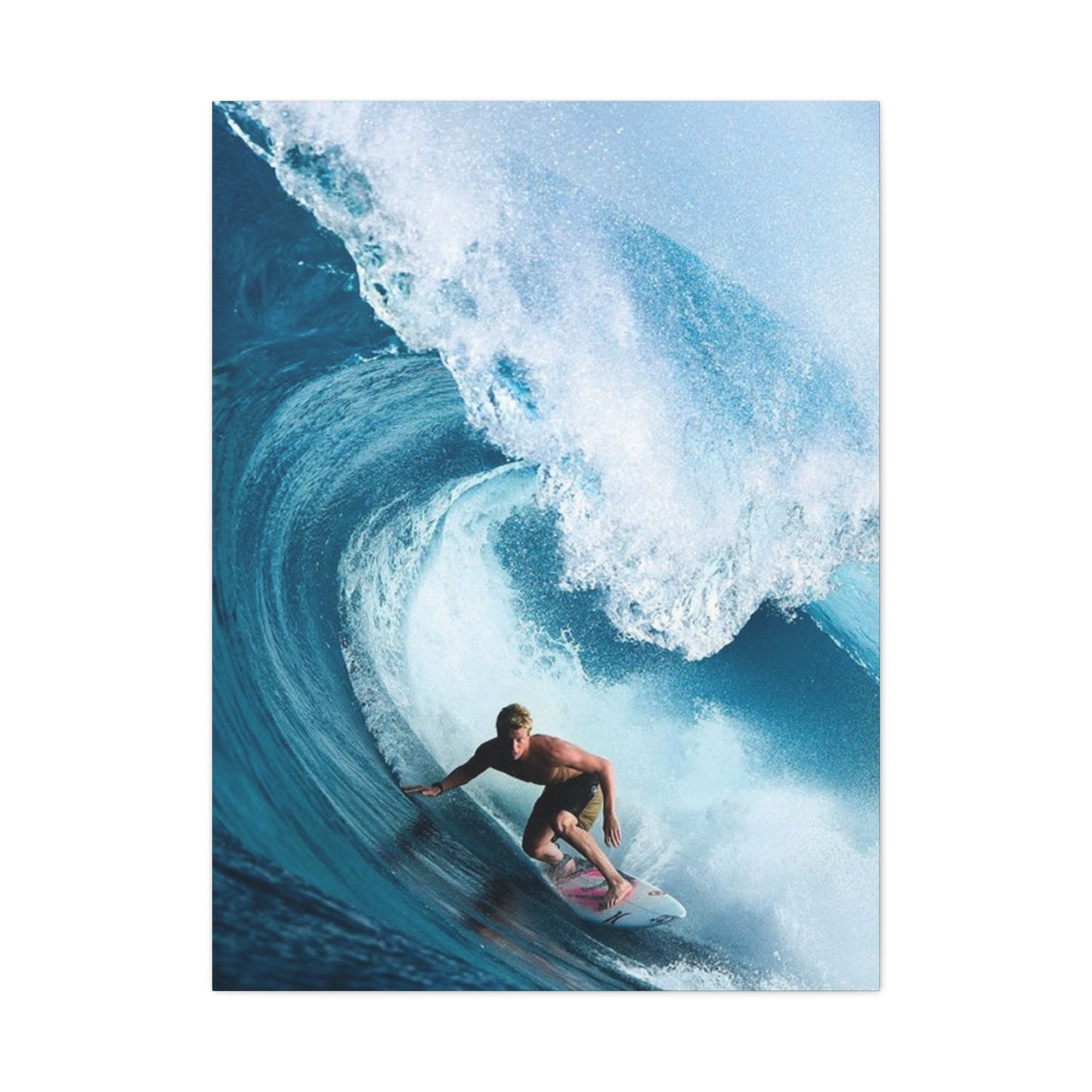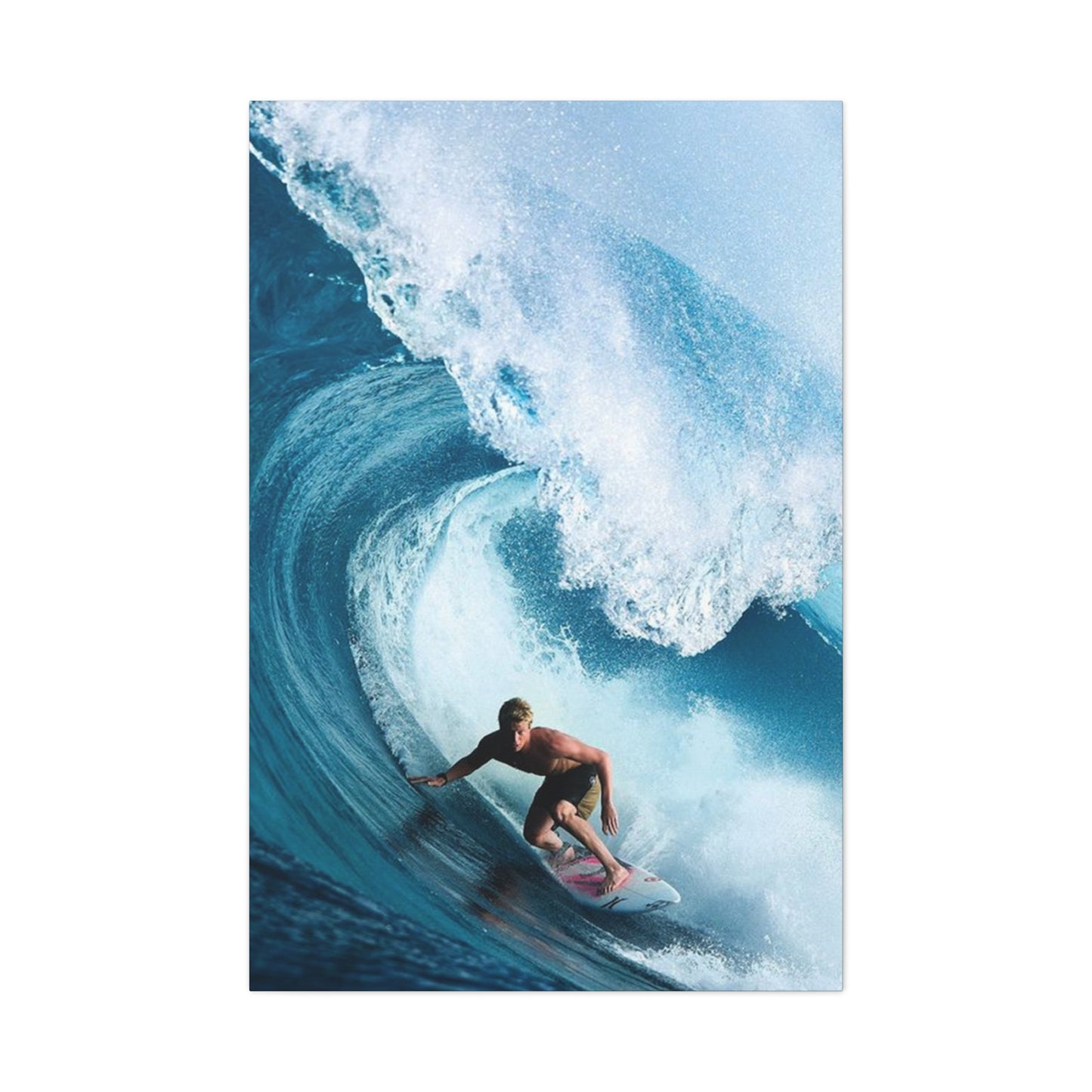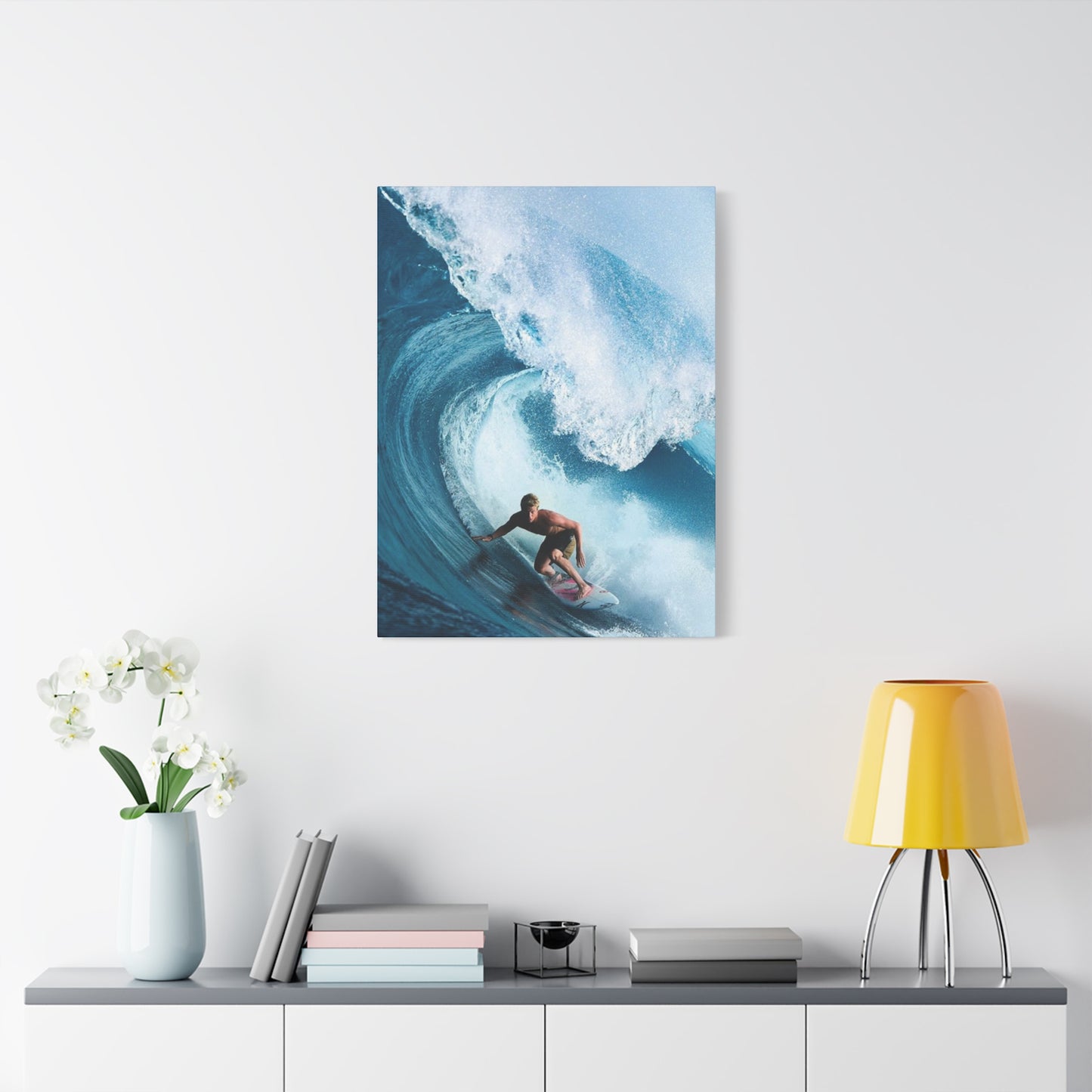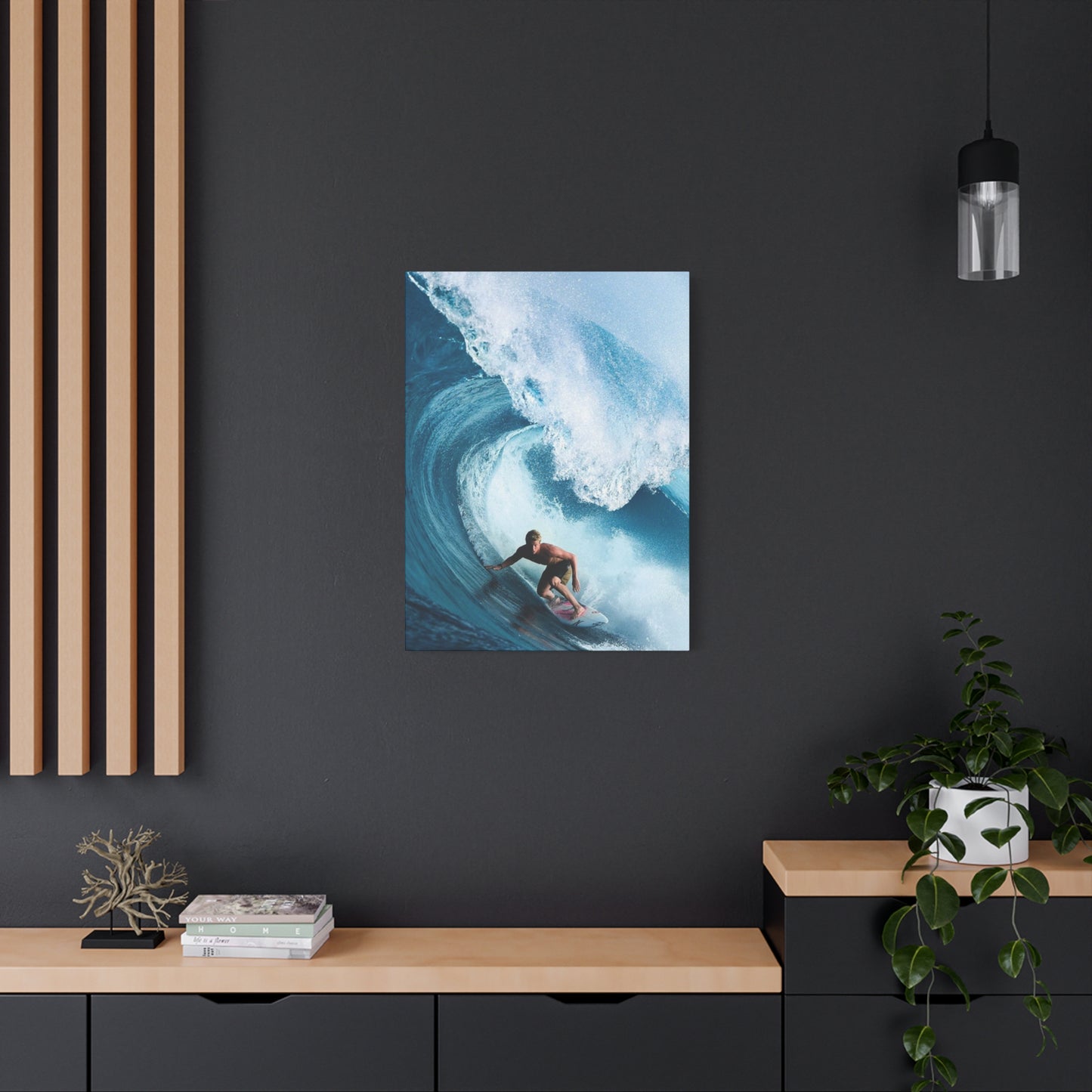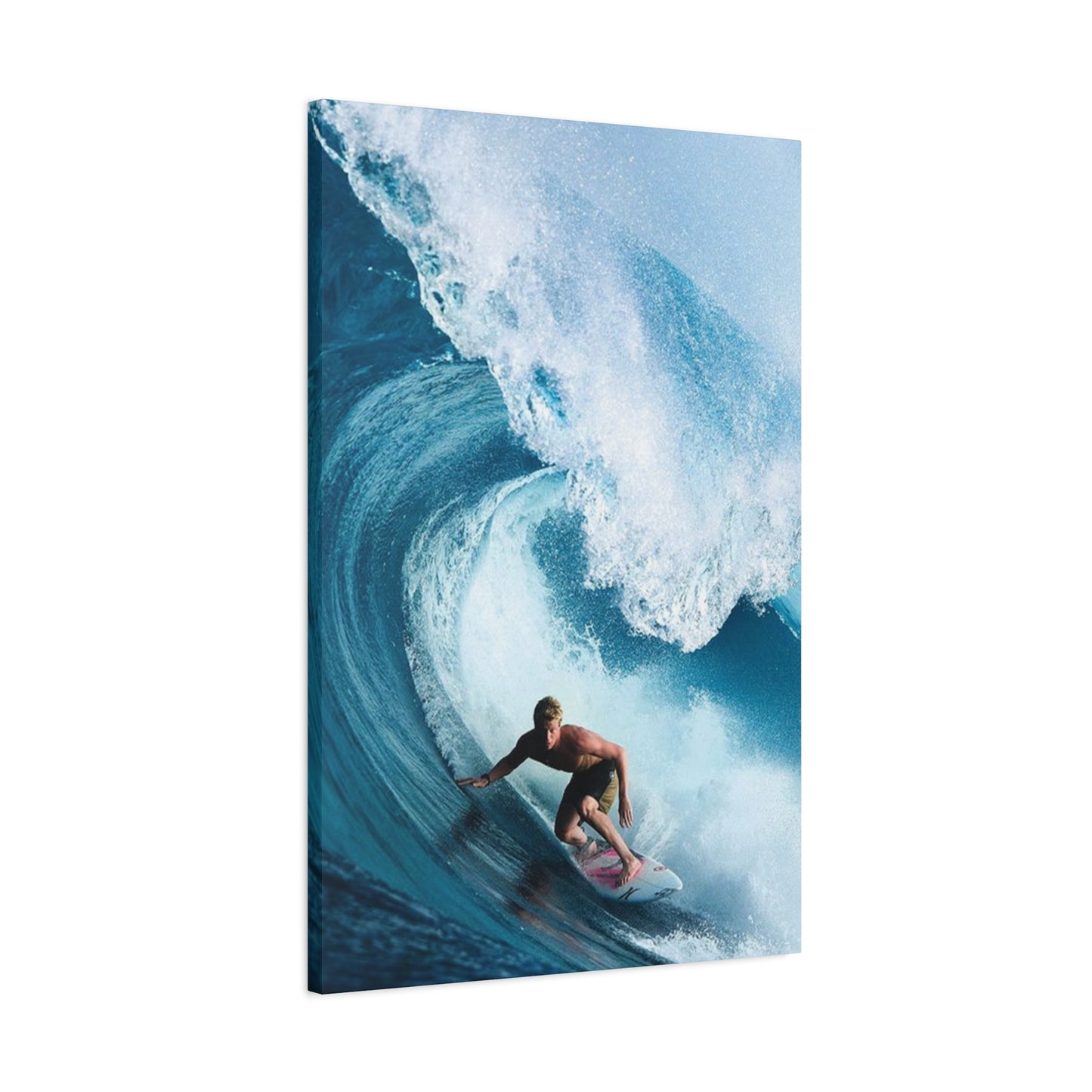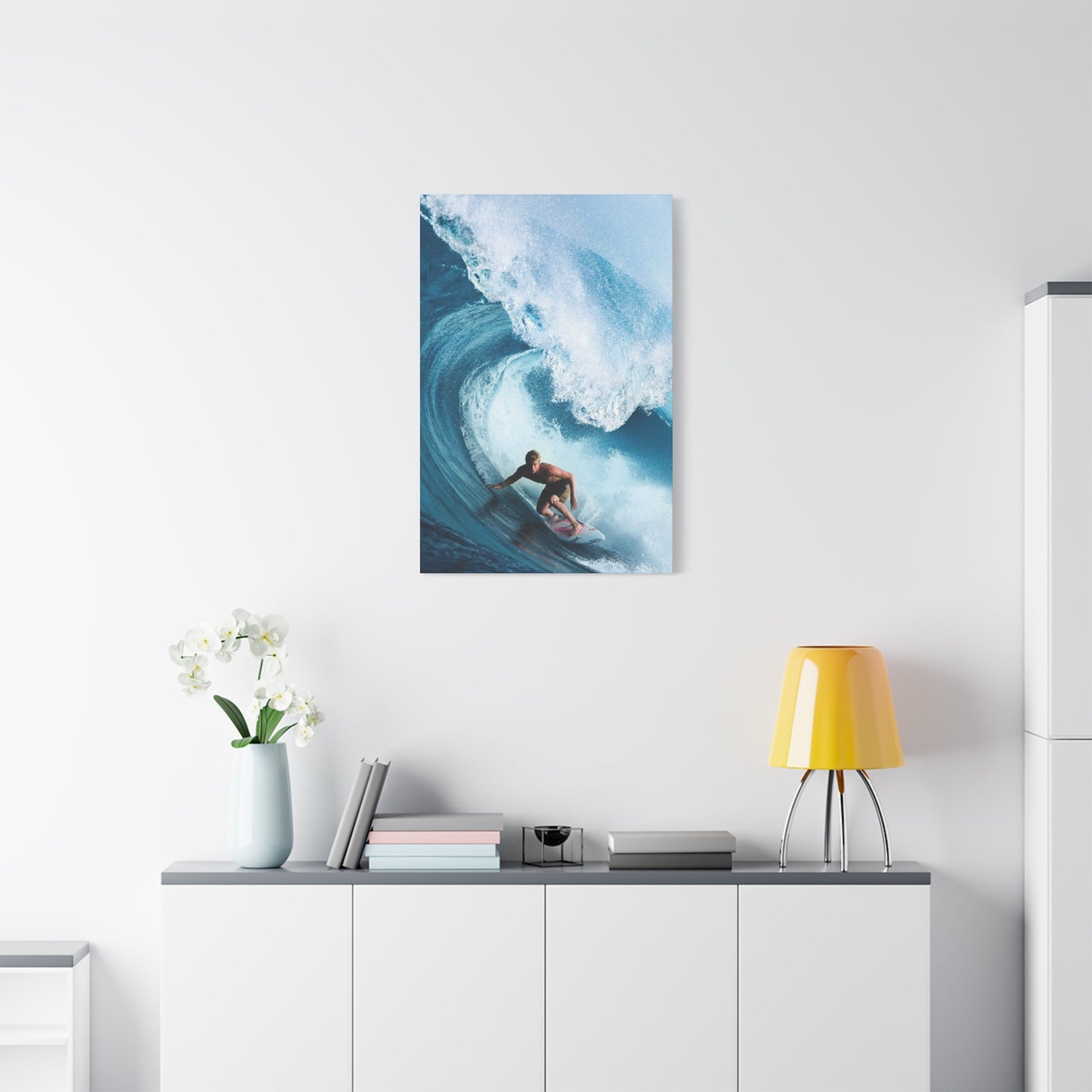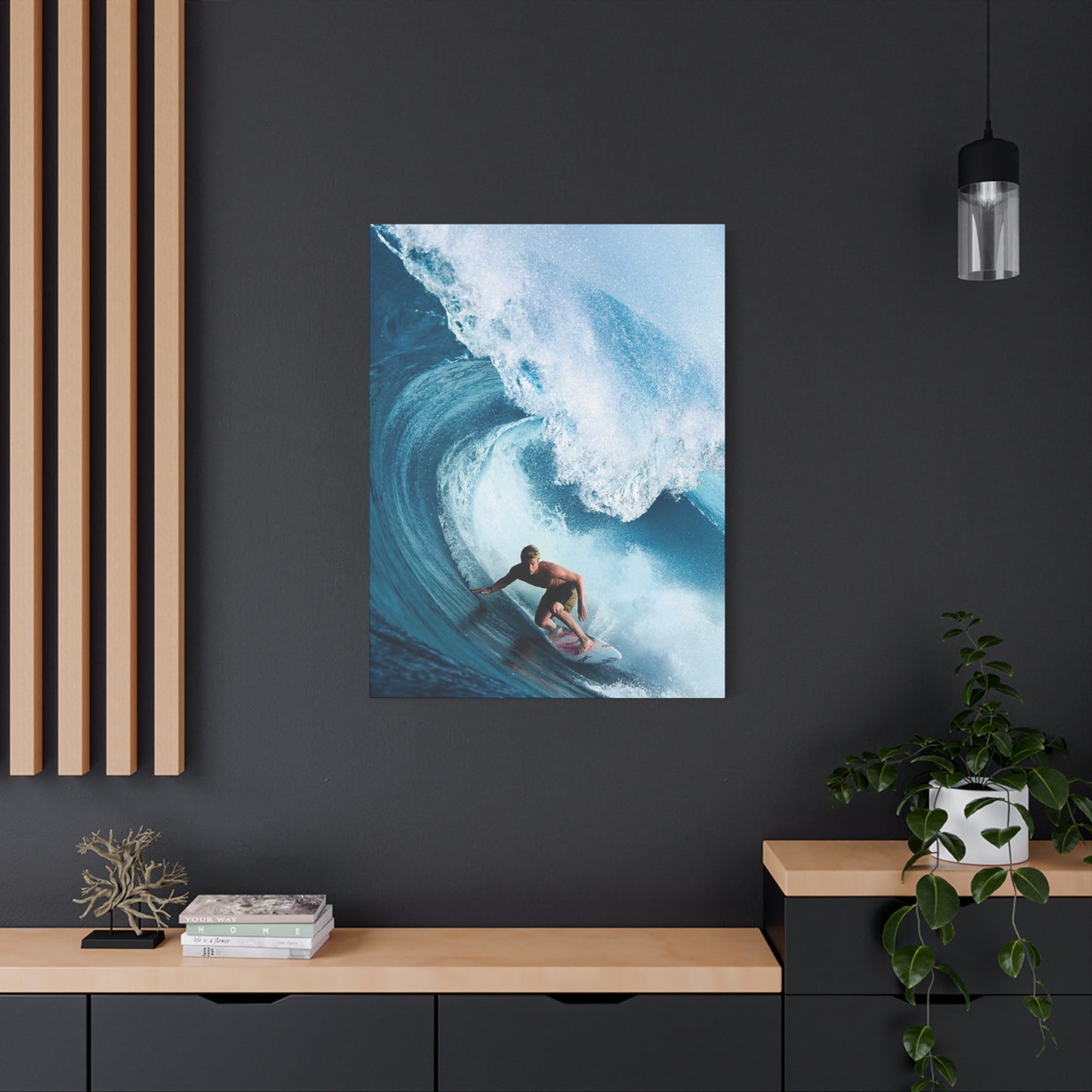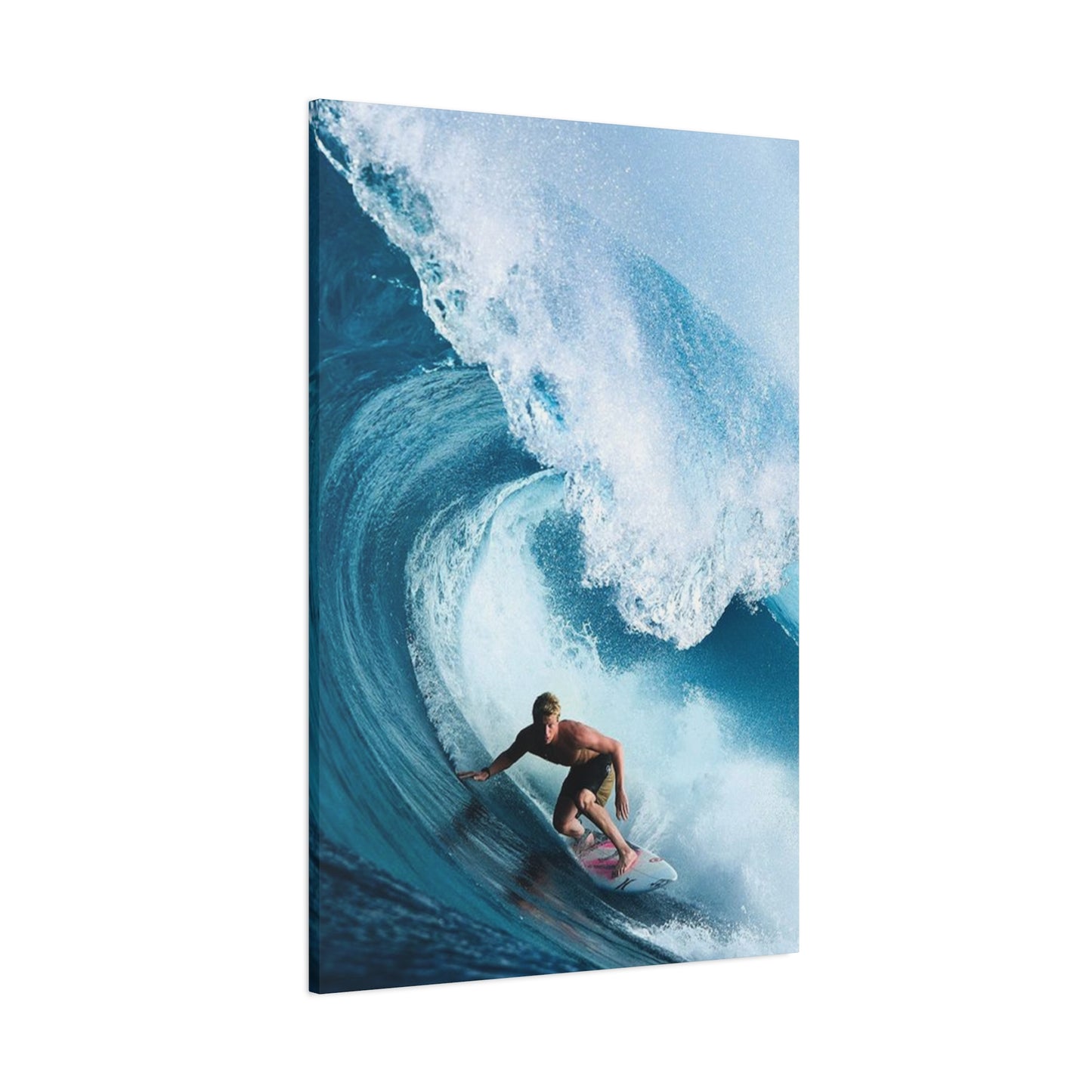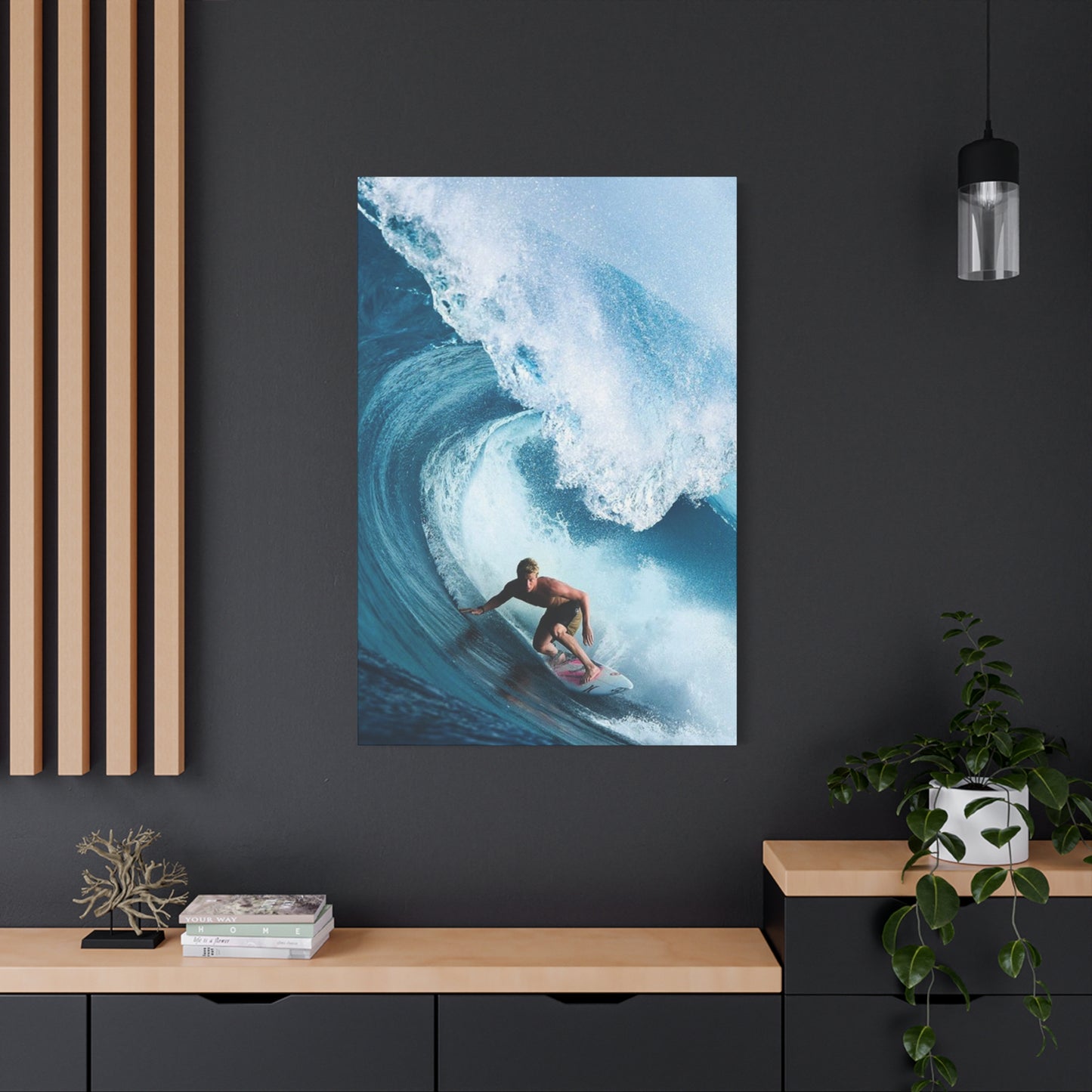Large Surfing Wave Wall Art & Canvas Prints
Large Surfing Wave Wall Art & Canvas Prints
Couldn't load pickup availability
Riding Giants: Large Surfing Wave Wall Art That Brings Ocean Energy Into Your Living Space
The allure of ocean waves crashing against shores has captivated humanity for centuries, creating an irresistible pull that transcends mere visual appeal. When transformed into monumental canvas pieces, these aquatic giants become more than decorative elements—they evolve into living statements that reshape entire environments. Large surfing wave wall art captures the raw magnificence of nature's most powerful force, offering homeowners and designers alike an opportunity to infuse spaces with perpetual motion and vitality.
Transformative Power of Oceanic Imagery in Contemporary Interior Spaces
Ocean-themed visual pieces possess an extraordinary capacity to alter atmospheric conditions within enclosed environments. The presence of large surfing wave wall art creates immediate focal points that command attention while simultaneously inducing states of tranquility. Research conducted by environmental psychologists reveals that individuals exposed to marine imagery experience measurable reductions in cortisol levels, suggesting these artistic choices deliver tangible wellness benefits beyond aesthetic considerations.
The scale of these installations amplifies their impact significantly. When viewers encounter wall-spanning representations of curling barrels or foaming crests, their spatial perception shifts dramatically. Rooms previously constrained by physical boundaries suddenly feel expansive and unbounded. This phenomenon occurs because the human brain processes horizon lines and vast water expanses as indicators of openness, triggering neural pathways associated with freedom and possibility.
Interior designers frequently leverage this effect when working with compact urban dwellings. A strategically positioned oversized wave photograph can visually double a room's perceived dimensions, creating breathing room in otherwise cramped quarters. The dynamic movement inherent in wave formations prevents the monotony that plagues many large-scale artworks, ensuring sustained visual interest over extended periods.
Color palettes derived from oceanic scenes offer remarkable versatility for diverse design schemes. Turquoise depths complement warm earth tones, while steel-grey storm swells harmonize beautifully with industrial aesthetics. Photographers and artists capturing these moments understand the subtle gradations within seemingly uniform water—from cerulean shallows to midnight abyssal zones—providing rich textural variety within cohesive compositions.
Selecting Perfect Dimensions for Maximum Spatial Impact
Determining appropriate sizing for large surfing wave wall art requires careful consideration of multiple architectural factors. Wall dimensions represent only the starting point; ceiling heights, natural light sources, furniture arrangements, and traffic flow patterns all influence optimal proportions. A common misconception suggests filling entire walls creates maximum impact, yet experienced designers recognize that negative space surrounding artwork enhances rather than diminishes presence.
For standard residential rooms measuring twelve to fifteen feet in width, pieces spanning six to eight feet horizontally achieve ideal balance. This proportion allows the artwork to dominate without overwhelming, maintaining comfortable visual relationships with surrounding elements. Vertical orientations suit spaces with vaulted ceilings or narrow wall sections, drawing eyes upward and emphasizing architectural height.
Commercial environments accommodate substantially larger installations. Hotel lobbies, corporate reception areas, and restaurant dining rooms benefit from statement pieces extending ten to twenty feet across. These grand-scale works transform transitional spaces into destinations, providing memorable visual anchors that define brand identities and create lasting impressions on visitors.
Multi-panel configurations offer flexibility unavailable with single-piece installations. Triptych arrangements depicting sequential wave motion create narrative flow, guiding viewers through compositional journeys from initial swell to explosive crash. These segmented designs also simplify shipping, handling, and installation logistics while accommodating architectural obstacles like windows, doorways, or built-in fixtures.
Weight considerations become increasingly critical as dimensions expand. Canvas-mounted prints offer lightweight solutions suitable for drywall mounting with standard hardware. Metal or acrylic substrates provide contemporary aesthetics but require reinforced anchoring systems capable of supporting substantial loads. Consultation with structural specialists prevents installation failures that could result in property damage or personal injury.
Diverse Medium Options for Oceanic Visual Expressions
Contemporary artists and photographers employ numerous mediums when creating large surfing wave wall art, each offering distinct advantages and aesthetic characteristics. Canvas remains the traditional favorite, prized for its texture, warmth, and versatility across decorative styles. Gallery-wrapped edges eliminate framing requirements, producing clean, modern presentations that float gracefully against walls.
Metal prints deliver unmatched vibrancy and durability, particularly suited for high-moisture environments like bathrooms or covered outdoor areas. The sublimation process infuses dyes directly into coated aluminum, creating luminous, scratch-resistant surfaces that withstand decades without fading. Light reflects uniquely off metallic substrates, generating subtle shimmer that mimics water's natural behavior.
Acrylic face-mounting produces depth and dimensionality unachievable through other methods. Photographs sandwiched between crystal-clear acrylic sheets gain three-dimensional qualities, with colors appearing suspended within the material. This premium presentation commands attention in upscale residential and commercial settings where cutting-edge aesthetics justify higher investment.
Traditional framed prints maintain relevance for those preferring classic presentations. Custom framing allows precise coordination with existing décor through mat selection, frame profiles, and finish choices. Museum-quality materials protect valuable photographs while sophisticated designs complement rather than compete with the featured imagery.
Tapestries and textile-based reproductions introduce softness and acoustic benefits. Woven or printed fabrics absorb sound waves, reducing echo in spaces with hard surfaces. These lightweight alternatives suit temporary installations, rental properties, or situations requiring frequent repositioning without wall damage.
Strategic Placement Principles for Maximizing Visual Flow
Positioning large surfing wave wall art demands thoughtful analysis of sightlines, lighting conditions, and spatial relationships. The primary viewing distance determines ideal height placement—artwork centers should align with viewers' eye levels when occupying the space naturally. In living rooms where occupants typically sit, this positioning places focal points lower than in foyers or hallways where standing observers predominate.
Lighting dramatically affects how wave imagery translates emotionally. Natural illumination from windows enhances blues and greens while casting gentle shadows that emphasize textural details. However, direct sunlight causes premature fading, necessitating UV-protective glazing or strategic positioning away from harsh rays. Artificial lighting requires equally careful planning; track lights or picture lamps highlight specific features while preventing glare that obscures fine details.
Architectural features offer opportunities for creative placement strategies. Positioning wave art above fireplaces creates dynamic juxtapositions between opposing elements—water versus fire—that spark conversation and intrigue. Staircases provide vertical canvases for ascending or descending compositions that complement directional movement through spaces. Alcoves and recessed areas gain purpose when transformed into dedicated gallery zones spotlighting prized pieces.
Relationship with furniture arrangements influences overall cohesion. Sofas facing wave artwork create natural viewing scenarios, transforming ordinary seating areas into contemplative retreats. Dining room installations visible from tables become conversation catalysts, providing visual interest during extended meal gatherings. Bedroom placements above headboards establish calming atmospheres conducive to restful sleep.
Scale harmony between artwork and furniture prevents awkward proportions. A massive wave print above diminutive seating appears top-heavy and unbalanced, while oversized sectionals dwarf moderately sized pieces. Designers recommend artwork spanning two-thirds to three-quarters of the furniture width below, creating visual continuity without strict uniformity.
Psychological and Emotional Resonance of Marine Imagery
Human connections to water run deep within evolutionary biology and cultural consciousness. Large surfing wave wall art taps into primordial associations that shaped our species' development along coastlines and riverbanks. The sight of waves triggers limbic system responses linked to survival instincts, territorial awareness, and resource acquisition—all processed beneath conscious thought yet profoundly influential on mood and behavior.
Different wave characteristics evoke distinct emotional responses. Gentle rolling swells communicate serenity, rhythm, and continuity, making them ideal for spaces dedicated to relaxation or meditation. Dramatic storm-tossed breakers convey power, challenge, and excitement, energizing environments where creativity and bold thinking flourish. Understanding these psychological nuances allows intentional selection of imagery aligned with desired atmospheric qualities.
Color psychology compounds these effects significantly. Azure tones associated with tropical waters promote openness, communication, and trust—valuable qualities in collaborative workspaces or social gathering areas. Darker navy and slate hues suggest depth, mystery, and sophistication, lending gravitas to professional settings or masculine retreats. Green-tinged waters evoke natural renewal and growth, supporting wellness-focused spaces.
Movement direction within compositions subtly influences spatial perception. Waves breaking toward the left guide attention and energy in that direction, potentially drawing focus toward adjacent rooms or architectural features. Rightward motion creates opposite effects. Centered symmetrical compositions establish stability and balance, anchoring spaces that might otherwise feel chaotic or disorganized.
Cultural associations add layers of meaning to wave imagery. For surfing enthusiasts, these pieces celebrate beloved pastimes and embody lifestyle values centered on freedom, adventure, and harmony with nature. Coastal dwellers maintain connections to familiar environments when relocated inland. Landlocked individuals cultivate aspirational relationships with oceanside living through vicarious visual experiences.
Curatorial Approaches for Multi-Piece Wave Collections
Building cohesive collections of large surfing wave wall art requires strategic vision and disciplined curation. Rather than randomly accumulating pieces, successful collectors develop thematic frameworks that create dialogue between individual works. Series documenting different breaking patterns—reef breaks, beach breaks, point breaks—educate while providing visual variety. Geographic collections spanning global surf destinations tell travel stories and celebrate cultural diversity.
Chronological arrangements tracking seasonal variations demonstrate nature's cyclical rhythms. Winter storm swells differ dramatically from summer's gentle rollers, offering opportunities to rotate displays seasonally or present comprehensive annual progressions. Time-of-day series—dawn, midday, sunset, night—showcase light's transformative effects on water, adding temporal dimensions to spatial experiences.
Stylistic diversity prevents monotony within collections. Photorealistic captures pair effectively with impressionistic interpretations, creating tension between precision and emotion. Black-and-white compositions emphasize form and texture, complementing vibrant color pieces without competing. Mixed-medium approaches incorporating paintings, photographs, and sculptural elements add dimensional variety.
Consistent framing or mounting styles unify disparate pieces into cohesive groupings. Matching frames, mat colors, or acrylic thicknesses create visual continuity even when imagery varies significantly. Alternatively, deliberate inconsistency—mixing frames, substrates, and sizes—generates eclectic energy suited to bohemian or collected-over-time aesthetics.
Gallery wall arrangements allow multiple smaller pieces to collectively achieve the impact of single large installations. Grid formations communicate order and intentionality, while organic clusters feel spontaneous and personal. Balanced asymmetry—varying sizes positioned to create visual equilibrium—demonstrates sophisticated design sensibility that elevates entire spaces.
Commissioning Custom Pieces from Marine Photographers and Artists
Original commissioned artwork offers opportunities to create truly unique large surfing wave wall art perfectly suited to specific spaces and personal preferences. Establishing clear communication with artists from project inception ensures results align with expectations. Detailed briefs outlining desired dimensions, color preferences, mood characteristics, and stylistic approaches provide necessary creative direction while respecting artistic autonomy.
Portfolio reviews reveal artists' strengths, signature styles, and quality consistency. Examining previous large-scale works specifically indicates capability handling expansive formats where compositional weaknesses become glaringly apparent. Client testimonials and installation photographs demonstrate professionalism beyond pure artistic talent—reliability, communication skills, and problem-solving abilities matter equally.
Licensing agreements require careful negotiation, particularly for commercial installations. Exclusive rights prevent image reuse, protecting investments in custom pieces. Usage scope definitions clarify acceptable reproduction contexts—promotional materials, merchandise, digital content—preventing future disputes. Intellectual property considerations grow increasingly complex as art enters online and social media realms.
Production timelines for custom pieces typically span several months. Photographers may need to wait for optimal weather conditions, tide cycles, or seasonal swells to capture envisioned imagery. Post-production editing, proofing rounds, substrate selection, printing, and finishing add weeks or months. Realistic scheduling prevents rushed compromises that diminish final quality.
Pricing structures vary considerably based on artist reputation, image exclusivity, production complexity, and market positioning. Emerging artists offer affordability while established names command premium rates reflecting brand value and proven excellence. Budget discussions during initial consultations prevent mismatched expectations and allow exploration of alternatives fitting financial parameters.
Preservation Strategies for Long-Term Vibrancy and Condition
Proper care ensures large surfing wave wall art retains visual impact for decades. Environmental controls represent the first defense against degradation. Temperature fluctuations cause expansion and contraction cycles that stress materials, potentially leading to warping, cracking, or delamination. Maintaining consistent conditions between 65-75°F (18-24°C) minimizes physical stress. Humidity levels ideally remain between 40-50% relative humidity; excessive moisture promotes mold growth while extreme dryness causes brittleness.
Ultraviolet radiation constitutes the primary threat to color stability. Even indirect daylight contains UV wavelengths that gradually bleach pigments and dyes. UV-filtering glazing, window films, or strategic positioning away from direct exposure substantially extends fade resistance. Archival-quality inks formulated for longevity delay but cannot entirely prevent eventual color shifts in unprotected environments.
Cleaning protocols depend on substrate materials. Canvas requires gentle dusting with soft brushes or microfiber cloths, avoiding moisture that might dissolve sizing or stain surfaces. Metal prints tolerate damp cleaning with mild soap solutions, though abrasive materials scratch protective coatings. Acrylic face-mounted pieces demand anti-static cleaners preventing dust accumulation while avoiding ammonia-based products that cloud or craze surfaces.
Periodic professional inspections identify developing issues before they become irreparable. Conservators detect subtle signs of deterioration invisible to untrained eyes—adhesive failures, mold onset, structural weaknesses—enabling early interventions. Established relationships with art handlers provide resources for emergency responses following accidents or environmental disasters.
Insurance coverage protects investments against theft, damage, or loss. Specialized fine art policies offer broader protection than standard homeowner's coverage, including agreed-value terms that eliminate depreciation disputes. Detailed documentation through photographs, appraisals, and provenance records supports claims processing and aids recovery efforts for stolen pieces.
Complementary Décor Elements That Enhance Oceanic Themes
Large surfing wave wall art achieves maximum impact when surrounded by thoughtfully selected complementary elements. Natural materials echo beach environments—driftwood accents, river rock arrangements, sea grass textiles—without resorting to literal nautical clichés. Raw wood furniture grounds spaces with organic warmth that balances cool water tones. Stone surfaces introduce textural contrast while maintaining earthy authenticity.
Textile selections significantly influence atmospheric cohesion. Linen fabrics in sand, cream, or seafoam hues reinforce coastal connections through tactile experiences. Geometric patterns suggesting wave forms or tide charts add subtle thematic reinforcement. Layered textures—nubby weaves, smooth cottons, plush velvets—create dimensional interest paralleling water's visual complexity.
Lighting fixtures contribute functional illumination while supporting thematic narratives. Capiz shell pendants filter light like sunlight through shallow water. Ceramic lamps glazed in ocean-inspired hues provide sculptural interest. Edison bulb fixtures introduce industrial elements balancing wave art's organic fluidity, preventing overly precious or predictable aesthetics.
Plant selections bring living elements that animate spaces alongside static artwork. Broad-leafed tropical specimens evoke coastal vegetation while improving air quality. Succulents and air plants require minimal maintenance yet deliver architectural forms complementing modern presentations. Large statement plants anchor corners or flank artwork, creating dialogue between natural and represented nature.
Color coordination across spaces maintains visual flow without rigid uniformity. Selecting several shades from wave artwork and distributing them throughout adjoining rooms creates subtle continuity. Accent pieces in coordinating hues—throw pillows, vases, rugs—establish connections without overwhelming. Neutral foundations allow flexibility as preferences evolve, facilitating updates through easily changed accessories.
Commercial Applications in Hospitality and Corporate Environments
Large surfing wave wall art serves powerful roles in commercial contexts beyond residential applications. Hospitality venues leverage ocean imagery to establish brand identities and create memorable guest experiences. Coastal resorts naturally gravitate toward wave themes, but landlocked establishments equally benefit from bringing waterfront ambiance to otherwise ordinary locations. Lobby installations set experiential tones immediately upon entry, communicating values of relaxation, adventure, or luxury.
Restaurants capitalize on wave art's ability to stimulate conversation and enhance dining experiences. Oversized pieces transform blank walls into destination features worth photographing and sharing socially, generating organic marketing through user-generated content. The inherent motion in wave imagery prevents visual stagnation during extended meals, maintaining engagement throughout multi-course experiences.
Corporate offices increasingly recognize workplace aesthetics' influence on productivity, recruitment, and retention. Wave installations in reception areas communicate forward-thinking progressive cultures. Conference rooms featuring dramatic swells inspire bold strategic thinking and creative problem-solving. Break rooms with calming ocean vistas provide mental restoration during demanding workdays, supporting employee wellness initiatives.
Medical and wellness facilities harness wave imagery's documented stress-reduction properties. Waiting rooms featuring soothing ocean scenes help anxious patients manage pre-procedure nervousness. Spa treatment areas leverage wave art to deepen relaxation states, enhancing service effectiveness. Dental offices notoriously associate with anxiety find ocean imagery particularly valuable for patient comfort.
Retail environments employ large surfing wave wall art to establish lifestyle associations with products. Surf shops and sporting goods retailers communicate authenticity and expertise through professionally captured wave photography. Fashion boutiques targeting beachy casual aesthetics reinforce brand positioning through visual merchandising. Home décor stores showcase how customers might incorporate similar pieces within their own spaces.
Environmental Considerations in Sustainable Art Sourcing
Growing environmental consciousness influences purchasing decisions across consumer categories, including large surfing wave wall art. Eco-minded buyers increasingly scrutinize production methods, material sources, and supply chain practices. Artists and vendors responding to these concerns gain competitive advantages while contributing to planetary stewardship.
Substrate selection offers significant sustainability variables. Recycled aluminum for metal prints diverts waste from landfills while requiring substantially less energy than virgin material production. FSC-certified wood frames ensure responsible forestry practices. Bamboo frames provide rapidly renewable alternatives to traditional hardwoods. Canvas produced from organic cotton or hemp eliminates pesticide concerns associated with conventional agriculture.
Printing processes vary considerably in environmental impact. Solvent-based inks release volatile organic compounds contributing to air pollution and health hazards. Water-based alternatives eliminate toxic emissions while delivering comparable color quality and durability. UV-cured inks minimize waste through efficient curing without heat or evaporation. Dye-sublimation for metal prints uses heat transfer rather than liquid application, generating minimal waste.
Packaging and shipping represent substantial carbon footprints for large artworks. Minimalist packaging using recycled materials reduces waste while potentially increasing damage risks—balancing protection with environmental concerns requires sophisticated solutions. Regional sourcing minimizes transportation distances and emissions. Digital marketplace platforms connecting local buyers with nearby artists eliminate unnecessary cross-country shipping.
Carbon offset programs allow consumers to mitigate unavoidable environmental impacts. Reputable offset providers fund verified projects—reforestation, renewable energy, methane capture—that sequester or prevent greenhouse gas emissions equivalent to those generated by art production and delivery. Third-party certification ensures offset legitimacy and impact verification.
Longevity represents perhaps the most significant sustainability factor. Durable, timeless pieces that remain relevant and intact for decades prevent waste cycles of disposable décor. Investing in superior materials and construction initially costs more but eliminates repeated replacement purchases. Classic rather than trendy imagery ensures sustained aesthetic relevance despite evolving design fashions.
Seasonal Rotation Strategies for Dynamic Living Spaces
Treating large surfing wave wall art as permanent fixtures overlooks opportunities for refreshing spaces through strategic rotation. Seasonal transitions provide natural occasions for updating displays, aligning interior environments with changing outdoor conditions. Summer months welcome vibrant tropical wave scenes with saturated turquoise and sunlit brilliance. Winter rotations might feature storm swells in steel greys and whites, honoring the season's dramatic character.
Storage solutions accommodate rotation systems while protecting inactive pieces. Climate-controlled storage units maintain optimal temperature and humidity conditions. Acid-free wrapping materials prevent surface damage during storage periods. Vertical storage prevents warping or pressure damage affecting stretched canvases or framed pieces. Careful labeling and inventory systems facilitate efficient rotation without excessive searching or handling.
Motivations for rotation extend beyond seasonal alignment. Mood-based selection allows occupants to influence atmospheric qualities according to current needs or preferences. High-energy dramatic breaks might rotate in during periods demanding motivation and intensity. Gentle rolling waves could emerge during stressful times requiring calming influences. This responsive approach treats living spaces as dynamic environments actively supporting inhabitants' wellbeing.
Thematic rotations celebrate personal milestones or cultural occasions. Anniversary pieces documenting honeymoon surf destinations might appear during annual celebrations. Holiday-specific imagery creates festive atmospheres without resorting to conventional decorations. Birthday rotations featuring locations significant to celebrants personalize special occasions.
Practical rotation considerations include installation hardware designed for repeated changes. French cleat systems allow easy removal and rehinging without patching nail holes. Gallery rails with suspended cables facilitate height adjustments and replacements. These systems initially require greater installation effort but reward long-term flexibility substantially.
Budget-Conscious Alternatives to Original Fine Art Pieces
Large surfing wave wall art needn't require extravagant expenditures to deliver impressive visual impact. Print-on-demand services democratize access to professionally captured wave photography at remarkable affordability. Digital marketplaces connect consumers directly with photographers worldwide, eliminating gallery markups while providing artists fair compensation. High-quality reproductions distinguish from originals only upon close examination, making them entirely suitable for most residential applications.
Emerging artists offer tremendous value propositions. Recent graduates from photography or fine arts programs possess contemporary skills and fresh perspectives yet lack name recognition commanding premium pricing. Supporting developing talent delivers financial savings while potentially acquiring pieces that appreciate significantly as artists' careers advance. Many emerging photographers eagerly accommodate commissions for experience and portfolio building.
DIY approaches dramatically reduce costs for those possessing moderate crafting abilities. Large-format printing services produce exhibition-quality prints affordably when customers provide mounting and finishing. Canvas stretching, frame assembly, and acrylic mounting tutorials proliferate online, enabling capable individuals to execute professional-quality presentations. Tools and materials represent modest investments yielding ongoing project capabilities.
Secondhand and vintage markets occasionally yield remarkable discoveries. Estate sales, thrift stores, and online marketplaces sometimes include high-quality wave photography at fractions of original retail pricing. Patience and persistent searching eventually reward diligent seekers. Reframing or remounting existing pieces updates presentations while preserving core imagery investments.
Strategic timing captures seasonal sales and promotional periods. Post-holiday clearances, Black Friday events, and end-of-summer liquidations offer significant discounts. Newsletter subscriptions to favorite artists or galleries provide advance notice of upcoming sales. Patience waiting for optimal purchasing windows sometimes saves hundreds of dollars on major pieces.
Monochromatic Wave Imagery for Sophisticated Minimalist Aesthetics
While color photography dominates large surfing wave wall art markets, black-and-white compositions offer compelling alternatives for specific design contexts. Monochromatic presentations strip away color's emotional associations, focusing attention exclusively on form, texture, light, and shadow. This reduction reveals wave architecture often obscured by vibrant hues—the sculptural curve of barrels, the intricate textures of foam patterns, the dramatic interplay between highlights and depths.
Minimalist interiors particularly benefit from monochromatic wave imagery. Spaces featuring restrained color palettes, clean lines, and uncluttered compositions require artwork that enhances rather than disrupts carefully constructed simplicity. Black-and-white pieces provide visual interest and focal points without introducing chromatic complexity that might conflict with existing elements.
Tonal range within monochrome images varies dramatically based on capture conditions and post-processing choices. High-contrast presentations featuring deep blacks and brilliant whites communicate drama and intensity, drawing eyes powerfully across compositions. Low-contrast grey-scale images suggesting fog or mist convey subtlety and mystery, rewarding extended contemplation. Mid-tone presentations balance these extremes, offering accessible yet sophisticated visual experiences.
Historical connotations accompany black-and-white photography that color images lack. Viewers subconsciously associate monochrome with documentary authenticity, artistic intentionality, and timeless classicism. These psychological frameworks elevate perceived artistic merit regardless of actual creative quality, positioning black-and-white pieces as serious art rather than mere decoration.
Printing monochromatic images presents unique considerations. True black-and-white prints using only black ink on neutral substrates differ substantially from desaturated color images. Warm-toned papers impart subtle sepia qualities evoking vintage aesthetics. Cool-toned substrates emphasize contemporary crispness. Metallic papers add luminosity enhancing water's reflective qualities even absent color information.
Incorporating Motion and Interactive Elements in Wave Displays
Emerging options extend large surfing wave wall art beyond static presentations into dynamic, interactive territories. Digital display frames featuring looping wave videos bring literal motion to walls, creating living windows onto ocean environments. High-resolution screens with anti-glare coatings blend seamlessly with traditional décor when not actively viewed, activating into mesmerizing sequences when approached or at programmed intervals.
Augmented reality applications overlay digital enhancements onto physical artwork through smartphone or tablet viewing. Additional layers—marine life animations, environmental soundscapes, educational content about depicted locations—emerge when devices scan printed images. These hybrid presentations bridge physical and digital realms, appealing particularly to technology-oriented demographics.
Motorized kinetic sculptures translate wave motion into mechanical movement. Sculptural interpretations featuring articulated components driven by quiet motors create hypnotic undulating patterns. Materials ranging from metal to wood to fabric offer diverse aesthetic possibilities. Though technically distinct from traditional wall art, these installations serve similar decorative and atmospheric functions.
Lighting effects dramatically alter static images without modifying core artwork. Programmable LED backlighting cycles through color temperatures mimicking daily light transitions—warm dawn tones shifting to bright midday, softening toward golden hour, finally settling into moonlit blues. Reactive lighting responds to ambient sound, pulsing gently with music or conversation, literally bringing artwork to life.
Projected imagery converts blank walls into endlessly variable canvases. High-lumen projectors display wave content from streaming services, personal photo libraries, or commissioned video loops. This approach sacrifices the tangible quality of physical art but offers unlimited variety and flexibility. Projection mapping techniques transform irregular wall surfaces, architectural features, and multiple planes into unified immersive seascapes.
Geographic Diversity in Global Wave Photography Subjects
Large surfing wave wall art spans diverse global locations, each offering distinctive characteristics reflecting regional conditions. Pipeline in Hawaii represents perhaps surfing's most iconic wave, defined by shallow reef breaks creating perfect cylindrical barrels. Imagery from this legendary break carries cultural cachet among surf enthusiasts while delivering spectacular visual drama.
Teahupo'o in Tahiti produces notoriously dangerous swells breaking over sharp coral reefs. Photography from this location captures immense power as massive walls of water jack up seemingly from nowhere, doubling or tripling height within seconds. The surreal translucent quality of Tahitian water—crystalline turquoise shot through with foam patterns—creates otherworldly aesthetics distinctly different from other surf zones.
Portugal's Nazaré has emerged in recent decades as big wave surfing's ultimate arena. Unique underwater canyon formations channel Atlantic storm energy into waves exceeding eighty feet. Images from Nazaré showcase human scale against nature's awesome power as tiny surfer figures navigate building-sized walls. The cold Atlantic's steel-blue and grey tones contrast sharply with tropical locations' vibrant hues.
Australian coastlines provide endless variety across vast distances. Queensland's subtropical breaks differ markedly from Victoria's temperate waters or Western Australia's remote coral atolls. The Great Ocean Road's dramatic limestone cliffs create stunning backdrops for wave photography, combining ocean power with geological majesty. Australian imagery often includes distinctive regional wildlife—seabirds, dolphins, whales—adding narrative elements.
California's coast encompasses enormous geographic and aesthetic diversity. Northern California's cold, fog-shrouded breaks produce moody imagery with muted colors and dramatic weather. Southern California's consistent beach breaks and beach culture create lifestyle-focused scenes populated with surfers and beachgoers. Mavericks near Half Moon Bay rivals Nazaré for big wave intensity, attracting elite surfers and photographers during winter swells.
Psychological Effects of Wave Imagery on Productivity and Creativity
Workplace environments increasingly recognize décor's influence on cognitive performance. Large surfing wave wall art specifically impacts mental processes in measurable ways. Studies examining nature imagery's workplace effects demonstrate improved focus, reduced mental fatigue, and enhanced creative problem-solving compared to abstract or non-nature alternatives. Wave imagery combines nature's restorative properties with additional elements particularly conducive to innovative thinking.
The fractal patterns inherent in wave formations engage visual processing centers without overwhelming cognitive resources. Human brains evolved to recognize and analyze natural patterns, processing them efficiently through specialized neural pathways. This efficient processing frees mental capacity for higher-order thinking while simultaneously providing visual stimulation preventing boredom or distraction.
Dynamic movement implied within static wave images activates imagination and mental flexibility. Viewers subconsciously complete motion sequences, extrapolating from captured moments to envision preceding and following actions. This mental activity exercises cognitive muscles associated with scenario planning, systems thinking, and creative synthesis—valuable capacities across professional contexts.
Color palettes derived from ocean scenes influence mood states affecting work quality. Blue dominance promotes calm focus ideal for detail-oriented tasks requiring sustained concentration. Green tinges suggest growth and renewal, supporting strategic planning and forward-thinking activities. Grey storm waves communicate seriousness and gravitas appropriate for high-stakes decision-making contexts.
Scale and perspective within wave photography subtly influence psychological states. Imagery emphasizing vastness and power reminds viewers of broader contexts beyond immediate concerns, combating the tunnel vision that sometimes accompanies intense focus. Human figures dwarfed by massive swells provide perspective on challenges, reframing overwhelming obstacles as navigable through skill and courage.
Framing and Presentation Options for Different Design Sensibilities
Framing choices profoundly affect how large surfing wave wall art integrates with surrounding environments. Traditional wood frames suit classic, formal interiors featuring antique or reproduction furniture, oriental rugs, and established architectural details. Frame profiles ranging from ornate carved designs to simple shaker styles accommodate varying formality levels. Wood tones should coordinate with existing woodwork and furniture for visual cohesion.
Contemporary spaces often favor frameless presentations emphasizing clean lines and uninterrupted surfaces. Gallery-wrapped canvases with imagery extending around edges eliminate frames entirely, creating floating appearances against walls. This streamlined approach prevents visual clutter while allowing artwork to speak without mediation.
Metal frames complement industrial, modern, and transitional interiors featuring exposed structural elements, concrete surfaces, and minimalist furnishings. Brushed aluminum, powder-coated steel, or brass frames introduce metallic accents tying to fixtures, hardware, and lighting. Thin profiles maintain contemporary aesthetics while providing structural support and protection.
Shadow box framing creates dimensional depth particularly effective for mixed-media pieces or works incorporating physical objects. Raised mats within deeper frames generate subtle shadows that change throughout the day with shifting light angles. This presentation style bridges traditional framing and contemporary floating mounts, offering versatility across design approaches.
Museum-quality conservation framing protects valuable pieces while showcasing them optimally. Acid-free mats prevent chemical degradation, spacers separate artwork from glazing preventing condensation damage, and UV-filtering glass shields from light exposure. Multiple mat layers create elegant reveals drawing eyes into compositions. Though initially expensive, conservation framing preserves investments potentially appreciating substantially over time.
Integrating Wave Art with Smart Home Automation Systems
Connected home systems enable sophisticated interactions between large surfing wave wall art and broader residential environments. Digital frames integrate with platforms controlling lighting, climate, entertainment, and security, creating cohesive automated experiences. Morning routines might trigger gentle dawn-lit wave videos accompanied by surf sounds through whole-home audio, gradually rousing occupants peacefully.
Voice-activated controls allow effortless content changes without physical interaction. Simple commands switch between different wave locations, seasons, or photographers, adapting displays to moods or occasions instantly. Integration with calendar systems automatically updates imagery for holidays, birthdays, or scheduled gatherings, reducing manual management while maintaining dynamic environments.
Environmental sensors enable responsive displays reacting to ambient conditions. Temperature readings might trigger imagery coordinating with weather—storm waves during rainy days, tropical scenes during heat waves. Occupancy sensors activate displays when rooms are in use, conserving energy during vacant periods. Motion detection can zoom artwork details as viewers approach, revealing hidden intricacies invisible from distance.
Streaming integration connects digital frames to subscription services providing endless content libraries. Curated collections from professional photographers worldwide refresh regularly, preventing visual stagnation. User-generated content platforms allow displaying personal photographs captured during surf trips, transforming displays into rotating digital albums celebrating meaningful experiences.
Biometric integration represents emerging frontier territory. Heart rate monitors or stress-tracking wearables could trigger calming wave content during detected anxiety, actively supporting wellness through responsive environmental adjustments. Sleep trackers might modify bedroom displays throughout night, promoting restful conditions through appropriate imagery and lighting.
Cultural Significance and Symbolism of Waves Across Societies
Large surfing wave wall art carries meanings extending beyond pure aesthetics, tapping into deep cultural symbolism accumulated across human history. Ancient civilizations dwelling near coasts developed complex relationships with ocean waves, viewing them as expressions of deity presence, metaphors for life's rhythms, or practical navigational tools. Modern display of wave imagery unconsciously invokes these archetypal associations.
Japanese culture particularly honors wave imagery, most famously through Hokusai's iconic "Great Wave off Kanagawa." This woodblock print has influenced artistic representations of waves globally, establishing visual conventions replicated across media. Displaying wave art within homes connects residents to this rich artistic lineage, participating in centuries-long dialogue about humanity's relationship with maritime environments.
Polynesian cultures historically centered around ocean mastery, developing sophisticated navigation systems and wave-reading abilities. Wave patterns communicated information about distant landmasses, weather systems, and seasonal changes. Contemporary surfing culture emerged from these traditions, particularly through Hawaiian practices. Wave imagery thus honors indigenous knowledge systems and celebrates cultural preservation.
Environmental movements increasingly employ wave imagery symbolizing climate change impacts. Rising seas, intensifying storms, and shifting ocean chemistry manifest dramatically through altered wave patterns. Displaying wave photography can signal environmental consciousness and commitment to planetary stewardship, communicating values beyond personal aesthetic preferences.
Spiritual and meditative traditions frequently reference water's qualities—fluidity, persistence, transformative power. Wave imagery within yoga studios, meditation spaces, or personal spiritual practices serves as focal points for contemplation. The eternal motion of waves rising, cresting, and dissolving mirrors cycles of birth, death, and renewal foundational to many belief systems.
Photography Techniques Capturing Waves at Their Most Dramatic
Understanding methods behind creating large surfing wave wall art enriches appreciation for final products while informing selection decisions. Water photography presents unique challenges requiring specialized equipment and techniques. Telephoto lenses compress perspective, making distant waves appear larger and more imposing while isolating subjects against blurred backgrounds. Wide-angle lenses emphasize scale and context, capturing entire seascapes with dramatic foregrounds.
Shutter speed selections dramatically affect wave representation. Fast exposures freeze motion, capturing individual water droplets suspended mid-flight and revealing intricate textures invisible to naked eyes. Slow exposures blur movement into silky flows, communicating motion and energy through abstraction rather than precise detail. Variable neutral density filters enable long exposures even in bright daylight, expanding creative possibilities.
Positioning relative to waves substantially influences compositions. Shore-based photography provides safety and stability while limiting perspectives. Water photography from boats, jet skis, or swimming positions delivers intimate angles and dramatic lighting opportunities but demands waterproof housings and physical endurance. Aerial photography via drones or helicopters reveals patterns and geometries invisible from surface level, showcasing waves as abstract art.
Timing proves critical when capturing optimal conditions. Dawn and dusk golden hours provide warm directional light enhancing water's translucence and creating long dramatic shadows. Overcast conditions eliminate harsh contrasts, revealing subtle color gradations within waves. Storm light during breaks in weather produces theatrical skies and intensified atmospheric drama.
Post-processing transforms raw captures into refined artworks ready for large-format printing. Color grading establishes mood through palette adjustments emphasizing specific hues. Contrast refinement enhances tonal separation and visual impact. Sharpening brings crisp detail while noise reduction smooths high-ISO graininess. These interventions walk fine lines between enhancement and manipulation, with artistic credibility depending on maintaining authenticity.
Conclusion
The Riding Giants: Large Surfing Wave Wall Art captures the raw power, beauty, and energy of the ocean in a way that brings life to any living space. This stunning piece of art transports the viewer to the crest of a massive wave, where the energy of nature and the thrill of surfing collide. With its dynamic composition and vibrant colors, this artwork does more than decorate a room—it evokes a sense of motion, freedom, and the exhilarating connection between the ocean and those who dare to ride its waves.
One of the key elements that makes the Riding Giants wall art so captivating is its ability to infuse any room with a palpable sense of energy. The sheer scale of the wave and the motion captured within the painting create a visual dynamism that can instantly transform a space. Whether displayed in a coastal home, an urban apartment, or a modern loft, this piece brings the power and majesty of the ocean indoors, acting as a focal point that draws the eye and sparks conversation. Its vibrant colors, often ranging from deep blues to bright whites and frothy greens, mirror the raw, untamed spirit of the sea and injects a vibrant pulse into the room.
The appeal of Riding Giants extends beyond its visual impact; it taps into the deep cultural and emotional connections people have with surfing and the ocean. For surfers, this artwork represents the thrill of chasing waves, the freedom of the open water, and the bond between human and nature. For others, it symbolizes adventure, courage, and the beauty of the natural world. It speaks to a universal human desire to experience something larger than ourselves, to test our limits, and to connect with the forces of nature in a way that is both humbling and empowering.
Furthermore, the Riding Giants artwork brings an unmistakable sense of escapism to any space. The ocean, with its endless horizons and powerful waves, has always been a symbol of freedom and adventure. The act of surfing—riding the waves—is often seen as a metaphor for life itself: the constant push and pull of challenges, the thrill of embracing the unknown, and the exhilaration of overcoming obstacles. This wall art, in its depiction of surfers tackling giant waves, taps into this sense of adventure and excitement, offering a daily reminder of the beauty and energy of life’s boldest moments.
Additionally, the Riding Giants wall art seamlessly fits into a range of interior styles, making it a versatile addition to modern homes. Whether you’re embracing a beach-inspired decor, a minimalist look, or a more eclectic style, this artwork's boldness and energy pair effortlessly with various design elements. It adds texture, color, and vibrancy to neutral spaces while complementing natural materials like wood, stone, or metal. Its modern, large-scale nature makes it particularly effective as a statement piece, grounding a room and adding a sense of balance with its larger-than-life subject matter.
In conclusion, Riding Giants: Large Surfing Wave Wall Art is more than just a visual accent for your walls—it's a celebration of the power and beauty of the ocean. It captures the thrilling, untamed energy of surfing and brings that spirit into your living space. Whether you’re drawn to its dynamic motion, its connection to the culture of surfing, or simply its ability to infuse a room with vibrant energy, this artwork is sure to become a captivating focal point in your home. It’s an ideal choice for those who want to immerse themselves in the vitality of the ocean and the rush of riding waves, turning any living space into a vibrant, energetic retreat.
Share
